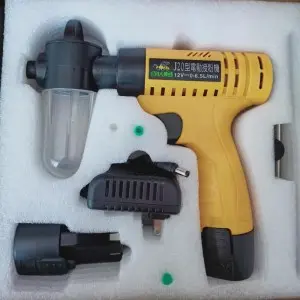Gru . 09, 2024 18:04 Back to list
Enhancing Kiwifruit Yield Through High-Quality Pollination Techniques in Orchards
High-Quality Pollination The Key to Successful Kiwifruit Orchards
Kiwifruit (Actinidia deliciosa) is a beloved fruit known for its unique flavor and nutritional benefits. To grow high-quality kiwifruit, orchardists must prioritize effective pollination, which is essential for maximizing fruit yield and quality. This article explores the significance of high-quality pollination in kiwifruit orchards, the process of pollination, and strategies to enhance pollination success.
Understanding Pollination in Kiwifruit
Kiwifruit plants are dioecious, meaning that they have separate male and female plants. For fruit production, a minimum of one male plant is necessary for every eight female plants. The male plants produce pollen, while the female plants develop the fruit. To achieve high-quality kiwifruit, it is crucial that pollen from male plants effectively reaches the stigmas of female flowers during the flowering period.
Pollination in kiwifruit can occur through wind, but the most effective method is through insect pollination, particularly by bees. The presence of pollinators in the orchard significantly enhances the rate of pollination as they transfer pollen from male flowers to female flowers while foraging for nectar.
Factors Influencing Pollination Success
Several factors affect the success of pollination in kiwifruit orchards
1. Bee Activity Honeybees, bumblebees, and other pollinators play a vital role in transferring pollen. The presence and activity level of these bees during the flowering period can directly impact fruit set. Factors such as weather conditions, temperature, and the availability of forage influence bee activity.
2. Weather Conditions Ideal weather during the flowering season is crucial for successful pollination. Warm, dry days with mild temperatures encourage bee activity, while rainy or excessively windy conditions can deter bees from foraging, leading to lower pollination rates.
3. Flowering Synchrony The timing of flowering between male and female plants must be well-coordinated. If male blooms do not coincide with female blooms, pollination success will diminish. Proper orchard management and selection of kiwifruit varieties can help ensure synchronization.
high quality pollination pollen of kiwifruit in orchard

4. Pollen Quality Not all pollen is created equal. High-quality pollen is necessary for successful fertilization. Factors such as plant health, nutrition, and genetics impact pollen viability and quality. Regular soil testing and appropriate fertilization can improve pollen quality.
Strategies to Enhance Pollination
To improve the quality and quantity of kiwifruit yields through effective pollination, orchardists can implement several strategies
1. Increase Pollinator Habitat Creating a welcoming environment for pollinators is crucial. Planting a variety of flowering plants nearby can attract bees and other beneficial insects. Providing water sources and nesting sites can also enhance pollinator populations.
2. Introduce Managed Pollinators In some cases, introducing managed honeybee hives to the orchard during the flowering period can significantly increase pollination rates. Beekeepers can be contacted to bring in hives, particularly when natural pollinator populations are low.
3. Optimize Planting Density Ensuring proper planting density of male and female kiwifruit plants can improve pollination efficiency. This may involve planting more male trees or strategically placing them within the orchard to facilitate better pollen distribution.
4. Monitor Flowering Times Keep a close eye on the flowering periods of male and female plants. This can allow orchardists to make timely decisions regarding management practices to enhance pollination, such as adjusting irrigation or fertilization to promote synchronized blooming.
5. Invest in Research and Innovation Staying updated with the latest research in horticulture and pest management can provide insights into improving pollination. Technologies such as pheromone traps or pollinator attractants can also be explored to enhance pollination success.
Conclusion
High-quality pollination is a cornerstone of successful kiwifruit production. By understanding the intricacies of the pollination process and implementing effective strategies, orchardists can greatly enhance fruit yield and quality. Emphasizing the role of pollinators and optimizing orchard management practices will not only lead to better harvesting outcomes but also contribute to sustainable agricultural practices. As demand for kiwifruit continues to grow, ensuring effective pollination will be more critical than ever in meeting consumer expectations for high-quality fruits.
-
Plant Pollen Analysis with GPT-4 Turbo AI Technology
NewsAug.04,2025
-
AI-Powered Plant Pollen Analysis Using GPT-4 Turbo
NewsAug.03,2025
-
Plant Pollen Analysis: Fast & Accurate with GPT-4 Turbo
NewsAug.02,2025
-
KiwiPollen with GPT-4 Turbo: AI Health Supplement Boost
NewsAug.01,2025
-
Pollen Peach Tree AI Management with GPT-4-Turbo
NewsJul.31,2025
-
Eco Fruit Paper Bags for Peak Freshness | Durability Focused
NewsJul.31,2025